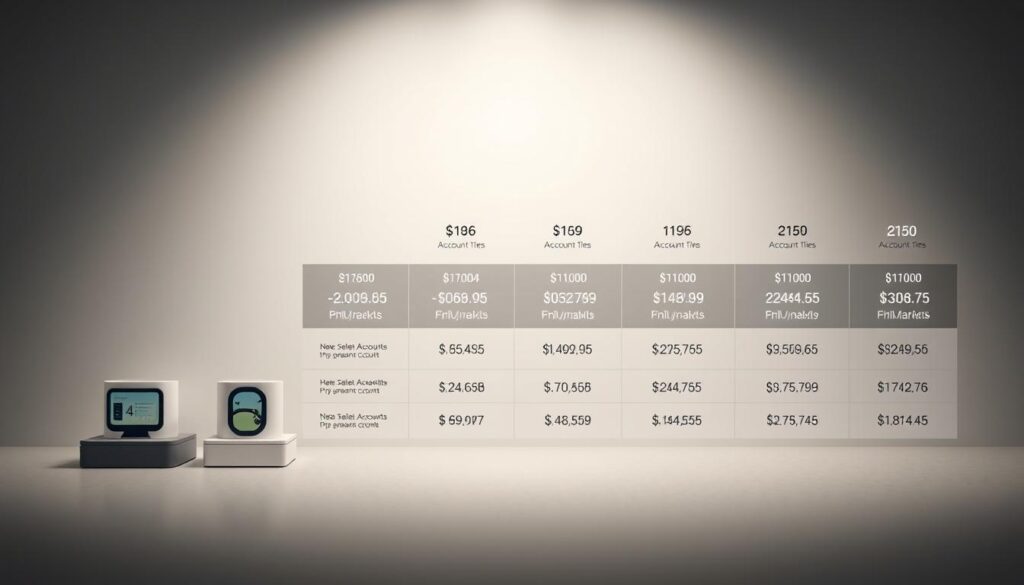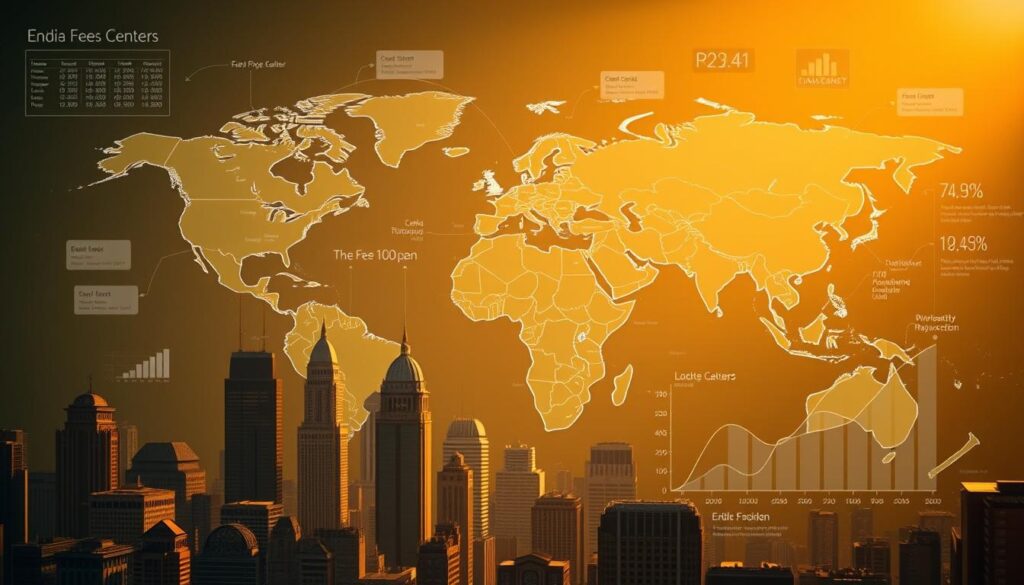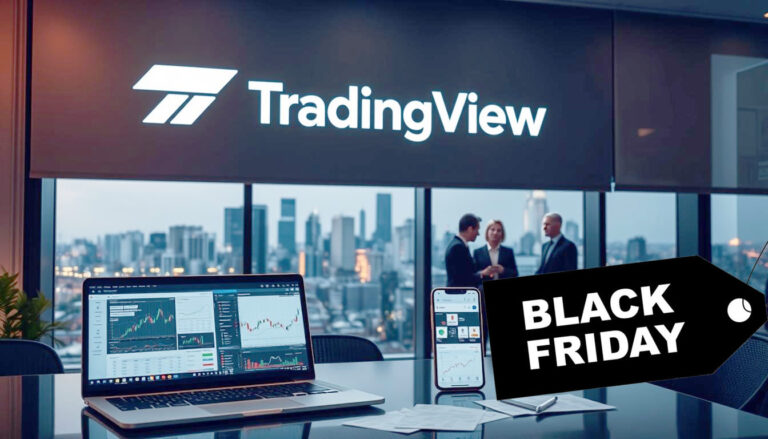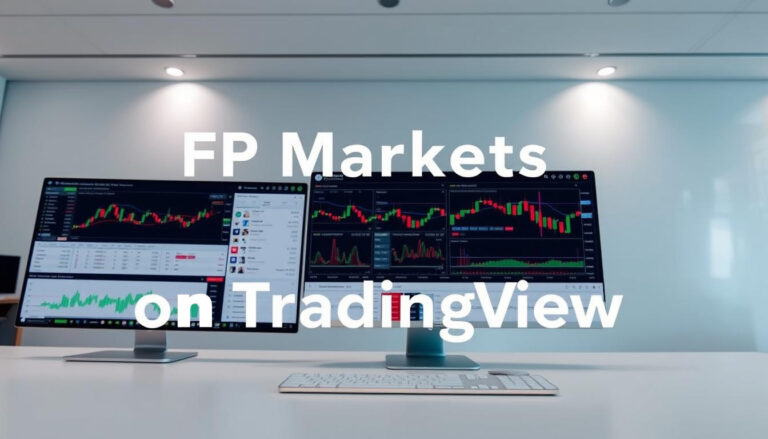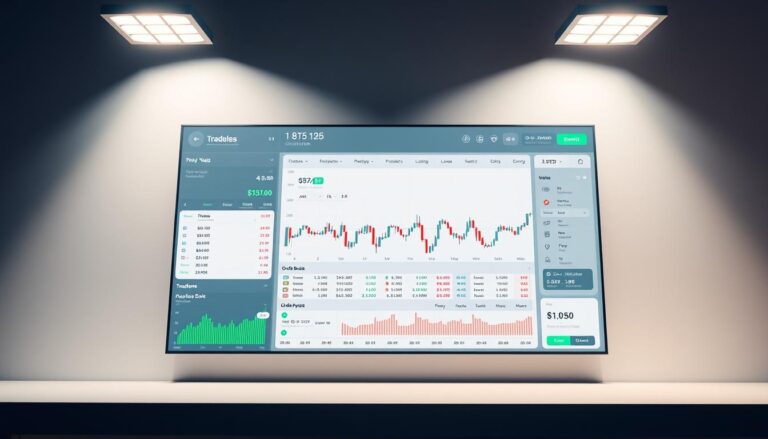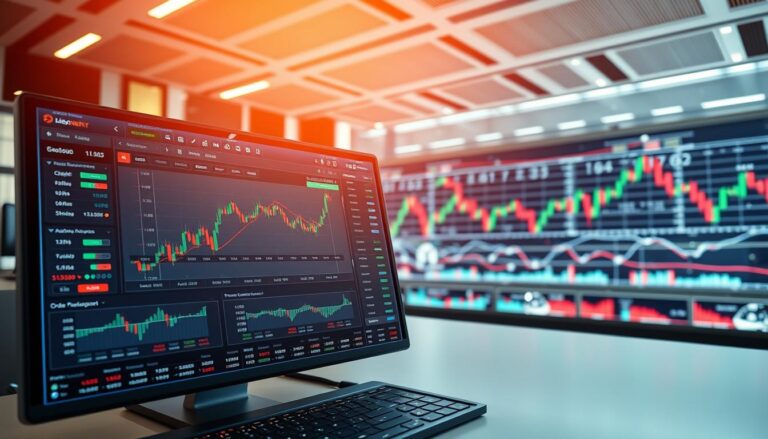Understanding FP Markets Fees: Costs and Charges Explained
Choosing the right broker involves more than just platform features—it’s about understanding costs. For over 18 years, one multi-asset brokerage has prioritized transparent pricing tailored to diverse trading styles. Their fee structures reveal which strategies they support, from high-frequency trades to long-term investments.
The brokerage offers two main account types: commission-free Standard and low-cost Raw accounts. With a $100 minimum deposit, traders access the same tools regardless of their choice. Raw accounts, however, slash fees by over 66% compared to traditional brokers. This flexibility makes it easier for users to align costs with their preferred approach.
Why does this matter? Fees directly impact profitability. Competitive pricing has reshaped the industry, allowing retail traders to access markets once dominated by institutions. Online brokers now provide tighter spreads and fewer hidden charges, democratizing opportunities across stocks, forex, and commodities.
This section breaks down all relevant costs—from spreads to overnight fees—helping traders evaluate if this broker fits their goals. Whether you’re a scalper or passive investor, clarity on expenses ensures smarter decisions in fast-moving markets.
Understanding the FP Markets Fee Structure
Every trade’s profitability hinges on transparent and predictable expense models. Traders face two primary cost categories: transaction-based charges and platform-related expenses. Knowing where these apply helps users optimize strategies and avoid surprises.
Breaking Down Transaction Costs
Trading expenses include:
- Spreads: The gap between buy/sell prices
- Commissions: Volume-based charges on specific accounts
- Swap rates: Fees for holding leveraged positions overnight
Currency conversion costs apply when depositing or withdrawing funds in non-base currencies. Unlike many brokers, this platform skips deposit and inactivity fees entirely.
Costs That Shape Decisions
Fee models influence how traders interact with markets. Scalpers often prefer raw accounts with tighter spreads, while long-term investors prioritize low swap rates. Transparent pricing lets users:
- Compare real costs across instruments
- Choose accounts matching their activity level
- Avoid strategies with unfavorable fee ratios
This clarity helps traders retain more profits. When costs align with goals, users can execute plans without hidden setbacks.
Exploring FP Markets Account Types and Pricing Models
Selecting the right account type directly shapes trading efficiency and cost management. Traders can choose between two distinct structures designed for different activity levels and strategies.
Standard Account vs. Raw Account
The Standard account uses commission-free pricing with spreads starting at 1.0 pips. This suits casual traders who prefer predictable costs without volume-based charges. For example, a standard lot trade incurs $10 in fees through spread costs alone.
By contrast, the Raw account offers spreads from 0.0 pips plus a $6 commission per lot. Active traders save 66% compared to Standard accounts on high-volume orders. Key differences include:
- Lower spreads for scalpers and day traders
- Volume-based savings for frequent transactions
- Clearer cost alignment with strategy goals
Deposit, Withdrawal, and Inactivity Policies
No fees apply for deposits, though payment providers may charge processing costs. International wire transfers over $10,000 qualify for a $50 reimbursement, reducing third-party expenses.
Withdrawal fees vary by method:
- Free bank transfers
- Potential charges for e-wallets
Accounts inactive for 30 days become archived but incur no penalties. This policy protects users from unexpected charges while maintaining account accessibility.
Deep Dive into Trading Fees at FP Markets
Trading costs vary significantly across asset classes, making spread analysis essential for strategy optimization. During peak London and New York sessions, real-time data reveals how different instruments perform. This section compares live results against industry benchmarks, highlighting where traders gain pricing advantages.
Spreads: What to Expect on Different Instruments
Live tests show competitive pricing across multiple categories:
- Forex: EURUSD at 1.1 pips vs. 1.3 industry average
- Commodities: Gold spreads of 27-29 cents, beating 85% of rivals
- Indices: DAX 40 at 0.8 pips during European hours
Cryptocurrency spreads fluctuate more, with Bitcoin averaging $16.01-$17.01. Energy products like WTI Oil maintain ultra-tight 2-cent gaps, ideal for scalpers.
Commission Models and Their Cost Implications
The Raw account’s $6-per-lot structure benefits high-volume traders. For 50 monthly lots:
- Standard account: $500 spread costs
- Raw account: $300 commissions + $0 spread
This model saves 40% for active users. Break-even analysis shows traders executing 15+ lots monthly gain more from Raw accounts. Commission-based pricing aligns costs directly with activity levels, creating transparency for frequent participants.
Trading Platforms and Their Fee Influences
Trading platform selection shapes cost efficiency as much as strategy execution. Providers offer diverse tools, but hidden charges often erode profits. One brokerage counters this with fee-free access to industry-standard software alongside premium options for advanced users.
MT4 and MT5: Key Features and Associated Costs
MetaTrader platforms dominate global trading due to their zero-cost accessibility. MT4 remains favored for:
- Automated strategies via Expert Advisors
- Customizable technical indicators
- Scalping-friendly execution speeds
MT5 expands capabilities with multi-asset support and enhanced order types. Both platforms charge no subscription fees, making them ideal for cost-conscious traders. Users access real-time data, backtesting tools, and mobile trading without extra costs.
Iress ViewPoint Advantages
Active equity traders benefit from Iress ViewPoint’s institutional-grade features. The platform offers:
- Direct market access for ASX-listed shares
- Advanced portfolio analytics
- Real-time depth-of-market data
While Iress normally costs $60 monthly, traders waive this fee by generating $150+ in commissions. This model rewards high-volume participants while maintaining affordability for serious investors. Casual users might prefer MT4/MT5 to avoid potential platform charges.
Detailed Analysis of Non-Trading Fees
Hidden costs outside trades can erode profits faster than market fluctuations. While execution charges dominate discussions, deposit and withdrawal policies often determine real-world profitability.
Depositing funds incurs zero internal charges. However, payment providers may apply processing fees. International bank transfers exceeding $10,000 qualify for partial reimbursement—up to $50 per transaction. This policy benefits high-volume traders moving large sums across borders.
Withdrawal costs vary by method:
- Bank transfers & cards: No commissions
- Neteller: 2% fee (max $30)
- Skrill: 1% transaction charge
E-wallets like FasaPay (0.5%) and PayTrust (1.5%) offer mid-range rates. Cryptocurrency withdrawals depend on blockchain network fees, which fluctuate based on congestion levels.
Accounts remain fee-free during inactivity. After 30 dormant days, positions close and accounts archive—no penalties apply. This contrasts sharply with competitors charging monthly maintenance fees.
Smart fund management involves selecting cost-effective withdrawal channels. Bank transfers work best for large sums, while local payment processors minimize smaller transactions’ impact. Always verify third-party charges before initiating transfers.
Global Fee Comparisons and International Considerations
Where you trade matters as much as how you trade. Regulatory frameworks create distinct cost landscapes across regions, shaping everything from leverage limits to safety nets. Brokers operating globally must adapt their pricing to comply with local rules, creating opportunities and challenges for cross-border participants.
Regulatory Boundaries and Trading Costs
European traders face 1:30 leverage caps under ESMA rules but gain access to investor compensation schemes. Offshore account holders can utilize 1:500 leverage through entities like St. Vincent & the Grenadines registrations. Key differences include:
- Margin requirements: Higher leverage reduces capital needed per trade
- Protection levels: EU accounts offer €20,000 compensation coverage
- Market access: ASX SPI200 futures cost 15 AUD vs 15 EUR for EUREX products
Futures CFD pricing reflects exchange locations. The CME charges 17.5 USD for E-MINI S&P500 contracts, while Tokyo’s NIKKEI 225 costs align with Asian session liquidity. Savvy traders match their base currency to their preferred instruments—holding USD accounts for CME trades avoids conversion fees.
Competitors often impose uniform global pricing. This brokerage tailors structures regionally, offering tighter spreads on DAX CFDs during Frankfurt hours. Such localization helps active traders capitalize on home-market advantages without cross-border cost penalties.
fp markets fees: Impact on Trading Strategies
Effective trading strategies thrive when costs align with execution frequency and market dynamics. The Raw account’s commission-based model offers precision pricing for diverse approaches. Tight spreads and low-latency execution create optimal conditions across asset classes.
Scalping strategies benefit most from sub-1-pip spreads and $6-per-lot fees. High-frequency traders executing 50+ daily trades save over 40% compared to standard pricing models. These savings compound rapidly, turning marginal gains into meaningful profits.
Algorithmic participants gain from deep liquidity pools that minimize slippage during automated order execution. Transparent pricing allows precise backtesting, ensuring strategies remain viable under real-market conditions. One-click trading from charts further streamlines rapid decision-making.
Swing traders favour competitive swap rates for holding positions overnight. No inactivity fees allow flexibility during low-volatility periods. This cost structure supports multi-day strategies without eroding potential returns.
Copy trading economics depend on clear fee visibility. Signal providers retain more profits when commissions stay predictable, while followers avoid hidden charges. Platform choice also matters—MT4’s Expert Advisors automate cost-efficient executions across time zones.
Day traders calculate break-even points using spread data and commission ratios. Narrow gaps on indices like the DAX 40 reduce entry barriers for intraday moves. By matching account types to activity levels, participants keep more of what they earn.
Cost Considerations for Equity CFD Trading
Equity CFDs carry distinct cost dynamics compared to forex or commodities. Traders accessing global stocks through platforms like MetaTrader 5 face unique pricing structures tied to exchange rules and liquidity cycles. Understanding these variables helps optimize strategies for NYSE-listed shares or European indices.
Minimum Spreads and Commission Rates
Competitive pricing emerges in two key areas:
- Ultra-tight spreads: DAX 40 CFDs start at 0.8 pips during peak hours
- Fixed commissions: $1.50 per $10,000 traded on US equities via MT5
Scalpers benefit from NYSE CFD spreads as low as 0.02% under normal volatility. For long-term positions, swap rates matter more—holding Apple CFDs overnight costs 0.8% annually in USD. This cost-effective approach suits diverse time horizons.
Regional exchanges influence pricing. ASX-listed shares incur AUD-denominated fees, while NASDAQ instruments use USD. Always match base currencies to avoid conversion costs. Transparent commission models let traders forecast expenses accurately, turning complex calculations into actionable insights.

